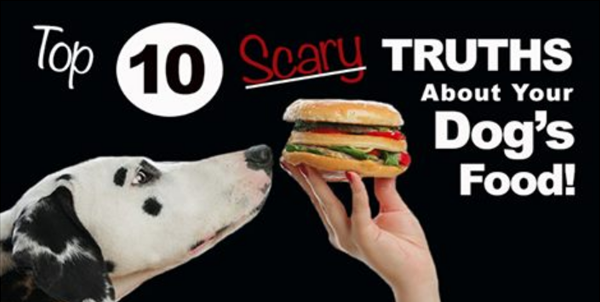Introduction
The sonorous voice of Sergeant Preston of the Yukon wafted from radio speakers 50 years ago as the Canadian Mountie and his faithful dog King tracked the bad guys and rescued accident victims in Canada’s rugged Yukon Territory. In the finest Lassie tradition, King did it all — his strength, intelligence, speed, intuition, and courage saved the day and his master over and over again.
King, the lead dog on Preston’s sled dog team, was a Siberian Husky.
The Siberian Husky’s ancestor was developed by the Chukchi, a tribe of native people in the eastern Siberian Arctic, a continent away from the Samoyed people who created their own working breed for the cold, harsh climate in which they lived. The Siberian’s thick, luxurious double coat, pleasant personality, and love of action make him well-suited for the climate of deep, penetrating cold and perpetual night of Arctic winters and for his labor as draft dog, guardian, and family companion.
A thousand years ago, the Chukchi carved their villages out of northern Siberia’s stark, inhospitable terrain. Starvation and freezing to death were always possibilities; hunters left the villages to travel to the Arctic Coast, searching for seals for meat, skins, and blubber to fuel their life-saving fires. They needed tough, resilient, and swift dogs to pull the kills back to the village, no matter the weather, and so developed the progenitor of today’s Siberian Husky, eventually producing a medium-sized dog that could work in a team, pull moderate loads, and complete the job with minimum energy expense.
The dogs’ speed and endurance saved the Chukchi from being conquered by the fierce Cossacks who expanded into the fur-rich territory; the natives loaded their possessions and families on dog sleds and kept ahead of the marauders from the south. Eventually, the invaders were trapped, surrounded, and vanquished by the natives, and the Chukchi were left to live in peace.
Siberian Huskies made their debut in Alaska with dog musher Leonhard Seppala early in this century. Several of Seppala’s Siberians were part of the heroic team that rushed life-saving diphtheria serum the last grueling miles to Nome, Alaska, in 1925. Balto, the lead dog in that team, is memorialized with a statue in New York’s Central Park; harnessed for the race, this bronze Balto faces north, his feat shrouded in history, his courage never known by the children who frolic on his sturdy back.
Today’s well-bred Husky maintains the personality, the stamina, and the courage of his ancestors, but he is more playmate than guardian and is not a watchdog.
Northern dogs
Dogs developed in northern climates have a typical appearance. They are double-coated, with a soft, downy coat next to the skin protected by a longer, stiffer, guard coat. The soft coat traps body heat, and the guard coat keeps the heat from escaping and water from penetrating to the skin. These dogs also have magnificent tails, often curled over their backs, that can protect their noses when they are curled in sleeping position.
Often referred to as Spitz-dogs, the northern breeds have thickly-furred upright ears, a pointed muzzle, expressive faces, and a smile. They range from the Norwegian Elkhound in the American Kennel Club Hound Group through the Pomeranian in the Toy Group, the Keeshond in the Non-Sporting Group, and the Akita, Alaskan Malamute, Samoyed, and Siberian Husky in the Working Group. The American Eskimo, an AKC newcomer, is also a northern breed. The Alaskan Husky is not a purebred dog; the McKenzie River Husky is a local Canadian race of huskies, and the Chinook, developed from Alaskan sled dogs, is the rarest of the northern breed group.
The Siberian Husky is often confused with the Alaskan Malamute, but the Mal is a much larger, more heavily-built dog developed for heavy draft work, not speed.
Siberian appearance
Full-grown males measure 21-23.5 inches at the withers and females are slightly smaller. Weight ranges from 35 to 50 pounds for females and about 10 pounds more for males; bone should be moderate, never slight or coarse. The dog’s body is slightly longer than it is tall; the total picture is one of balance, grace, and athletic ability.
The eyes are brown or blue and can be one of each color or speckled. Often enhanced by a white mask, the facial expression is friendly, alert, and even roguish. The ears are triangular and erect and should not be large.
The Siberian can be any color from white to black; most are black or red with white markings or shaded gray. Color is far less important in the breed than the ability of the dog to perform with speed, ease, and stamina.
The Siberian temperament is outgoing, friendly, and gentle. However, puppies can be a handful until they learn who is boss in the family. They can also be destructive, particularly if they don’t have enough to keep their minds occupied. A Siberian left alone for long periods may eat the sofa or dig through a door to get to the other side.
Care and training
The Siberian makes a fine family pet as long as the buyer is patient, has the time to devote to training and exercise, and can deal with a dog that has a mind of its own. Although they don’t bark much, Siberians are vocal_they’ll sing along with sirens and scream as if being killed if forced to do something they don’t want to do. All-breed obedience classes can be a treat if a Siberian is present: a simple “down” command can bring howls of protest even under the most gentle guidance, and a mild correction for nipping can elicit torturous shrieks. This is not the breed for a first-time dog owner who is shy or easily embarrassed in public.
Although they bond easily and tightly to their human families, most northern dogs are not slavish in their affections. Few are successful in obedience competition, particularly at the higher levels, because they are easily bored with repetition and lack precision in their work. They are happy to obey, but always on their own terms. Rather than gaze lovingly into the master’s eyes, the Siberian will most likely be content to heel approximately in place, to sit almost straight, to come when called unless there’s something else more interesting nearby. It takes a truly dedicated owner to achieve high scores and advanced titles.
Along with destructiveness, the Siberian’s bad habits include a penchant for wandering, often preceded by the digging of a hole under the fence, and food-stealing. Digging is natural with this dog; his forbears dug holes in the snow as nests, and the instinct remains strong. His innate need for exercise and his inherent curiosity often lead him astray. So, a strong fence is necessary to keep him home
preferably a fence that has been sunk a foot or two into the ground. An electronic or radio-frequency fence will probably not do the trick, especially if more than one Siberian lives in the yard.
Siberians that wander can get lost, stolen, or hit by cars. They can also contribute to the mixed breed dog population, for wandering males will find females in heat, and wandering females in heat will be a target for any male. Owners should seriously consider sterilization to prevent unwanted litters, to somewhat curb the wanderlust, and to prevent reproductive tract cancers from developing.
To pre-empt food-stealing, a habit that often escalates in winter, the Siberian should not be allowed unsupervised in the kitchen.
The Siberian is an easy care breed. He does shed profusely at least once a year, and daily or twice-daily combing sessions are necessary if there is any hope of keeping the fine undercoat hair off furniture and clothes and out of food. The hair comes out in tufts, usually beginning on the hind end and continuing forward on the body. Shedding takes about two or three weeks; a warm bath may help loosen the hair so it can be combed out quicker. A Siberian kept in the house all year, especially in dry heat, will probably drop hairs all year.
Although generally healthy, the Siberian is subject to hip dysplasia, progressive retinal atrophy (a genetic eye disease), cataracts, corneal disorders, thyroid deficiency, and zinc-deficiency disease. Buyers should therefore beware of backyard breeders and pet stores whose breeding stock has not been found free of hip dysplasia and tested for PRA and thyroid diseases. A health guarantee means nothing if the breeding stock has not been tested.
Poor breeding also has caused temperament problems in Siberians; in addition to being poor physical specimens, pet store puppies may be high-strung and hyperactive, difficult to housetrain, and very tough to obedience train.

